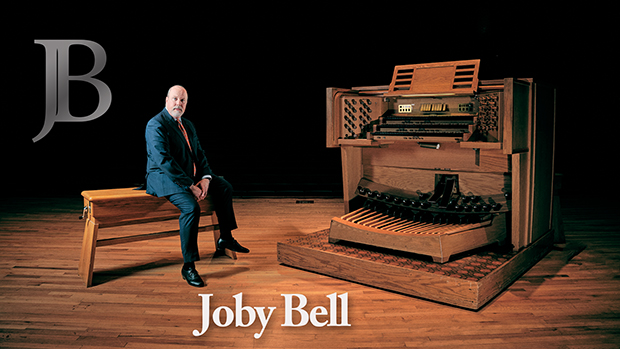Not a dry eye
 Tuesday, March 15, 2016 at 6:38PM
Tuesday, March 15, 2016 at 6:38PM Three organs on this earth have brought tears to my eyes on first hearing: Ste-Clotilde in Paris (the Cavaillé-Coll stops that Franck knew); St. Mary's Anglican Cathedral in Edinburgh (Father Willis), and First Baptist Church, Longview, Tex. (G. Donald Harrison signature Aeolian-Skinner, Op. 1174). Since first encountering the Longview instrument in about 2000, my ears have been opened to American Classic organ building; my eyes have been opened to the glory of Modern Gothic architecture (you have to visit the Longview church to believe it); and my mind has found its passion for the marvels of historical instruments and their importance to our heritage. Couple all this with the fact that the congregation of the First Baptist Church of Longview, Tex., has always recognized the treasure they have, and this organ remains tonally unaltered and well cared for. (I choose to ignore the conversion to Peterson ICS as an "alteration." We need those kinds of things these days, especially on an organ that big and that old.)
This organ is the product of the classiness that characterized many places in the 1940s/1950s. Take lots of oil money, add in a new church building (1951), add a contract with America's pre-eminent organ building firm, and mix generously with the design and tonal finishing of America's great voicer Roy Perry, and you have one of only a handful of epicenters that still bespeaks this perfect storm. The architecture never gets old. The organ never gets old. I have stepped into that space countless times since the first time, and it takes my breath away every time.
The genius of this organ is in the sum of its parts, the buildup of the ensemble. Plenty of foundation, and bright silvery mixtures in all the right places. The Pedal has plenty of its own stops for every registrational need (ANY pedal division that doesn't require coupling to fill it out is worth the price of the organ!). There are FIVE celestes. But the crowning glory, if you ask me, is in the 16-8-4 unit Pedal Ophicleide. Such power and tone, and yet such completion of the whole ensemble when it comes on. And you don't dare use it on just anything.
Why do I describe this organ so lovingly and so thoroughly now? Because I have just finished a two-day recording session on it. This recording will have its high spots, as any will. But the real high point is in sitting between those two massive chambers and bathing for three days in that sound that brought tears to my eyes all those years ago. I am fortunate indeed and will be the most rewarded listener of this recording. Even if the recording bombs, I will always have these moments at that instrument to remember.
I chose all-British repertoire. This organ was "fathered" by an Englishman, and it makes sense to use it in this way. We'll have the Alec Rowley Suite, a handful of chorales by Healey Willan and C.H.H. Parry, the Three Pieces of Frank Bridge, and first Sonata by Basil Harwood.
I arrived on Sunday, March 13, 2016, to begin registering. Long day, which finally ended about 9 pm. Producer Keith Weber arrived from Houston that night, and the "secret weapon" -- engineers Ryan Edwards and Shannon Smith of Houston -- arrived Monday lunch time. We recorded Monday from 1:00 until 8:00 pm and then Tuesday from 9:00 am until 4:15 pm. It was record time for such a long program (it will push the 80-minute limit of a standard CD).
Not only do I seek to showcase an organ with a recording, but I also try to use as much of its colors as possible. We'll hear lovely chorale solos on the Swell Nazard, the Choir Cromorne and English Horn, and on the 8-foot principals of the Swell and Great. A tremulant or two will make more than one cameo. And we'll hear plenty of that pedal reed when the time comes. The ultimate sheen provided by the second mixture on the Great will make its appearances judiciously but proudly. We'll hear from the Trompette on the Bombarde division, and we'll even hear a short, dramatic cameo from the Antiphonal.
As recording sessions go, this was just another one, with multiple takes of the hard stuff and surprisingly few takes of the easy stuff. This is the third collaboration between these guys and myself. But I believe that we attained new levels of mutual appreciation and professional respect. They appreciate my actually being ready to record (apparently, that's not the norm in this business, which is inexcusable), and I relaxed much more this time and let them tell me what to do. Once I have practiced and shown up, the rest is up to them!
Of course, I am grateful to the church and the music staff for their generous hospitality. For the most part, gratefulness to a church staff and congregation goes without saying, because without their support, you don't have a recording! But they deserve our endless thanks and praise not only for welcoming little old me, but more importantly for recognizing and preserving the treasure of that organ.
Keith and I are of one mind on this organ. At one point, he stood at the console rather than stay in the hallway with the engineers. In that location, you are literally flooded with the sound of the organ. At the end of one particular piece where the Ophicleide comes on to ice the cake, he had tears in HIS eyes.
